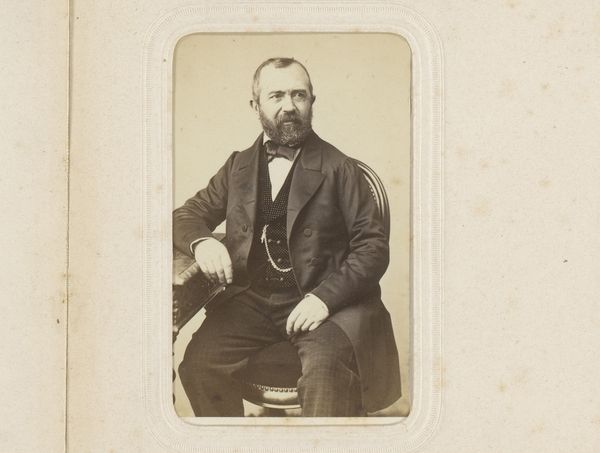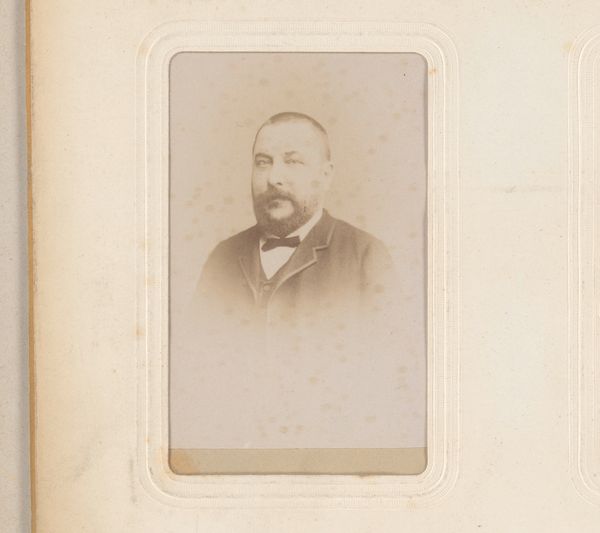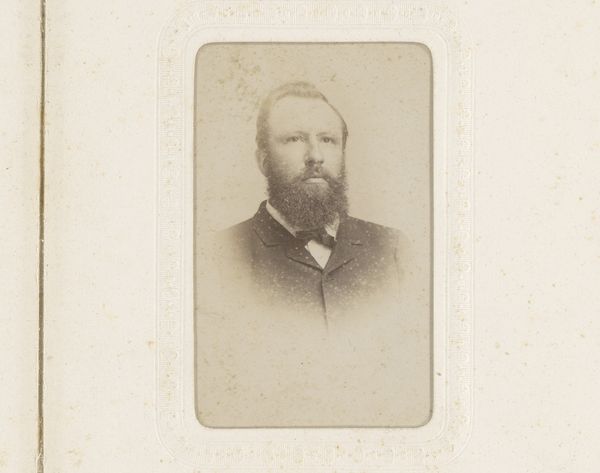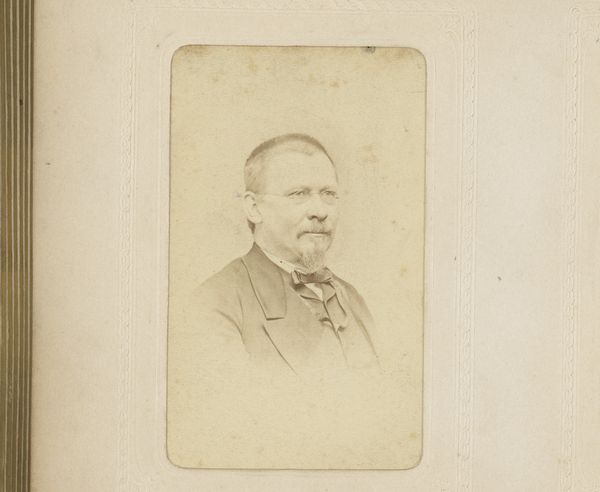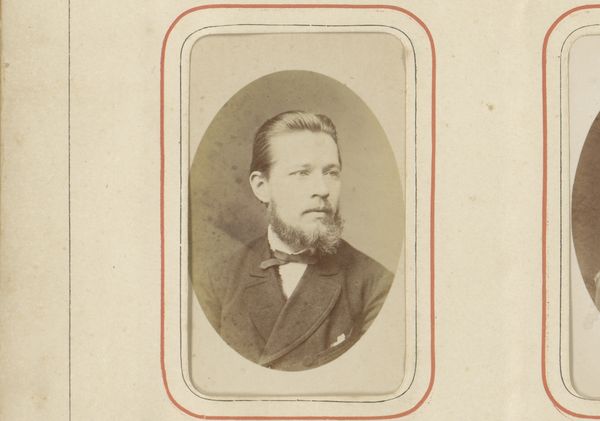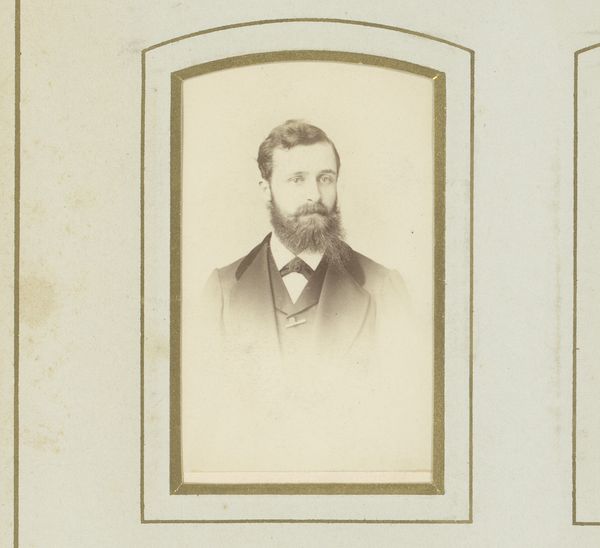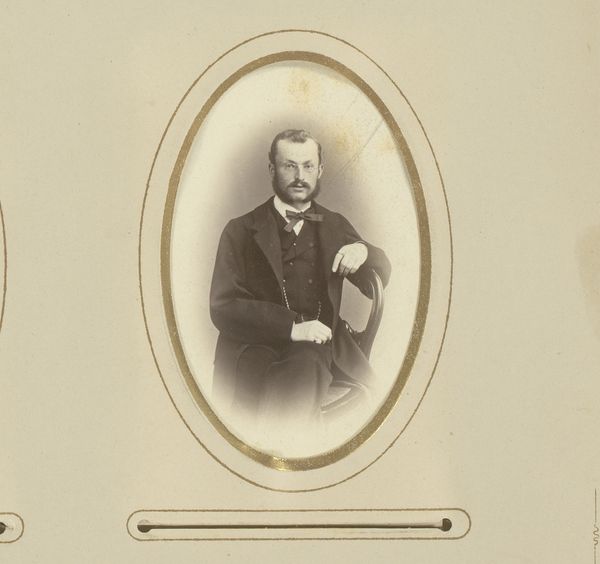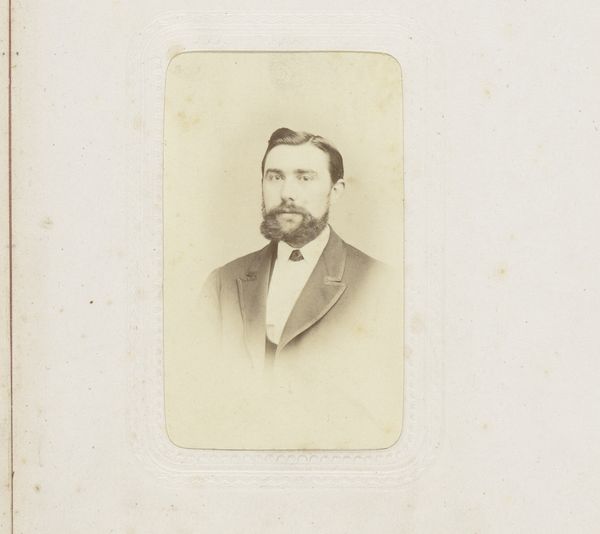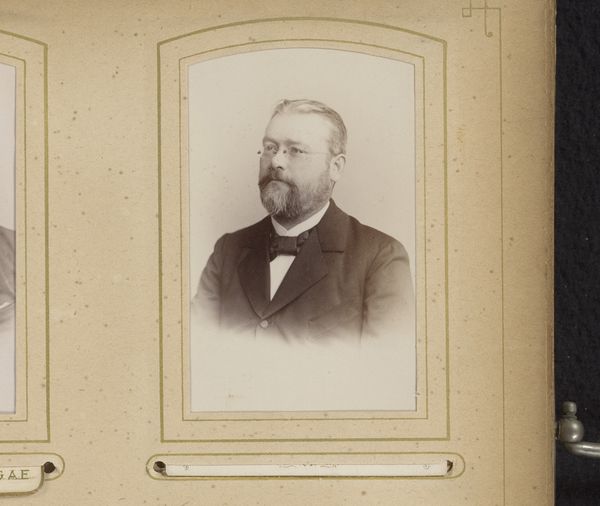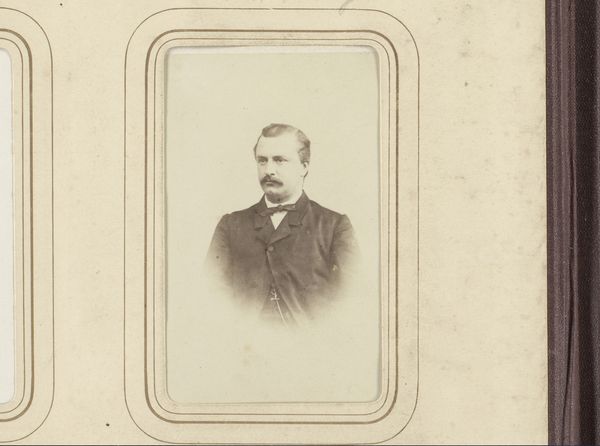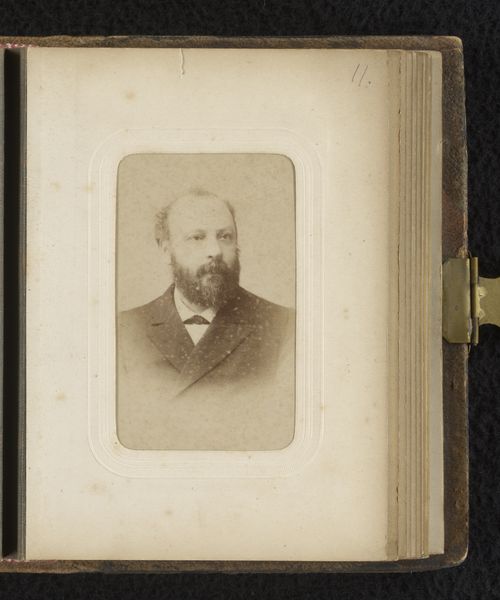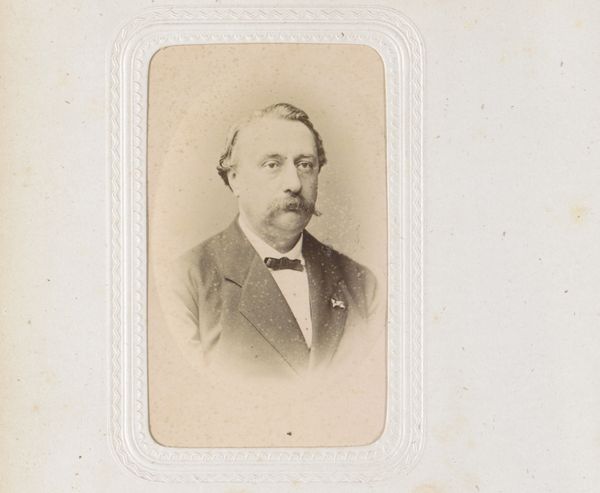
photography, gelatin-silver-print
#
portrait
#
photography
#
gelatin-silver-print
Dimensions: height 82 mm, width 49 mm
Copyright: Rijks Museum: Open Domain
Editor: We’re looking at a gelatin-silver print photograph entitled "Portret van een man met snor en baard," placing it somewhere between 1850 and 1900, and attributed to Ernst Wolffram. There's something about the focused intensity of the subject's gaze against the softened sepia tones that I find so compelling. How do you interpret the impact of the limited tonal range and its effect on the composition? Curator: The restricted palette undeniably guides the viewer's eye. Note the subtle variations within the monochrome. The light catches the planes of his face and beard, sculpting them with minimal contrast. Observe how the almost creamy highlights around his forehead subtly guide the eye down towards the darker, more textured rendering of his beard and attire. Do you think this strategic use of light and shadow contributes to a sense of psychological depth? Editor: I do. It creates a quiet gravity. What about the soft focus? The sharpness is concentrated in his eyes, and that almost ethereal haziness surrounding him gives a dreamlike quality, wouldn’t you agree? Curator: Precisely! It pushes us away from a purely representational function. The blurring is more suggestive than descriptive. This pushes us away from purely representational portraiture and more into…dare I say…an exercise in abstract form. The question then is, can you consider portraiture of this kind of representational nature in early photography as a new visual style?. Editor: That's an interesting challenge to how I usually understand portraits. It focuses our attention less on likeness and more on form and light itself. Thanks for making me see this in a new light! Curator: Indeed. Visual nuance is its own reward.
Comments
No comments
Be the first to comment and join the conversation on the ultimate creative platform.
